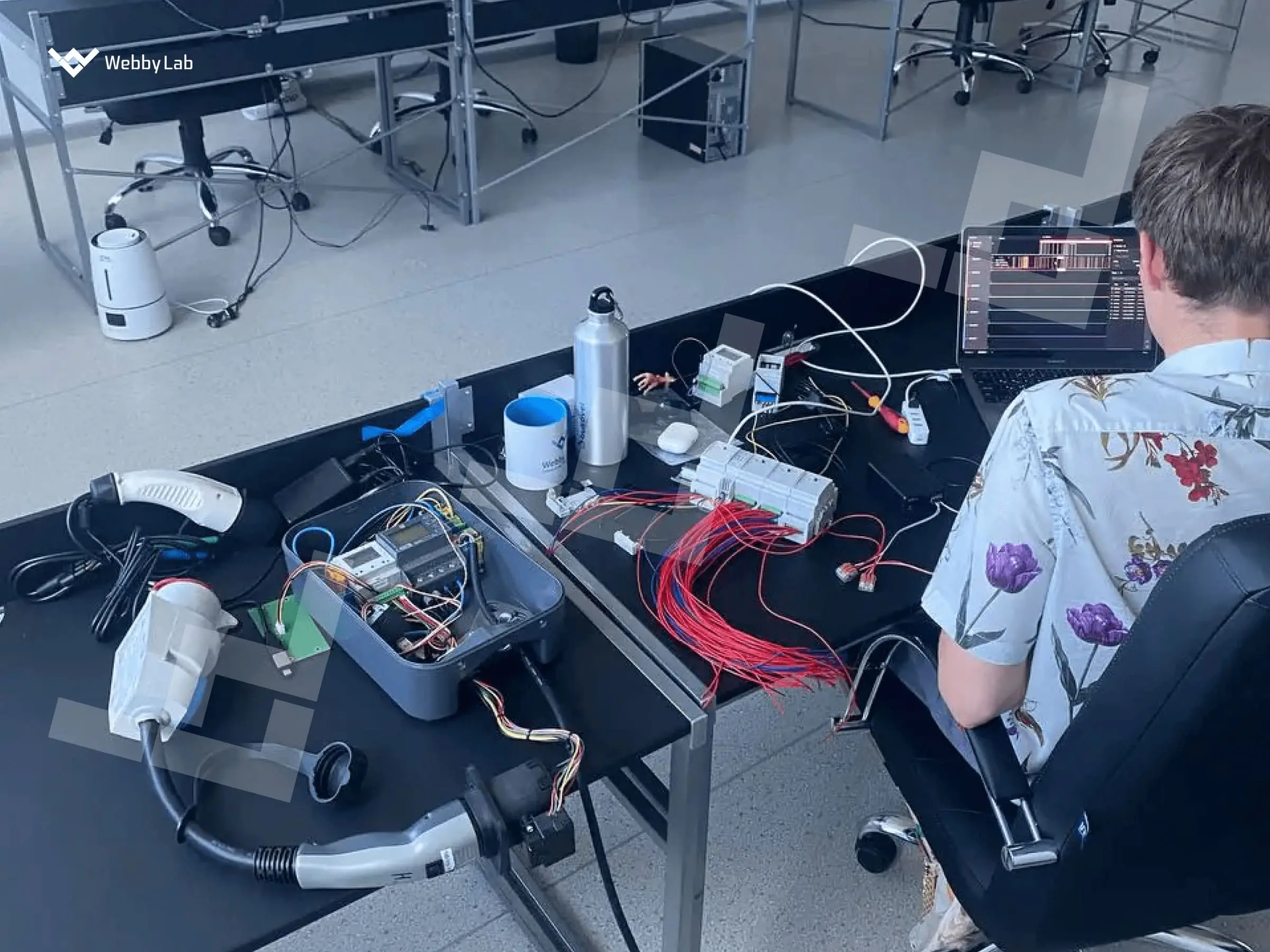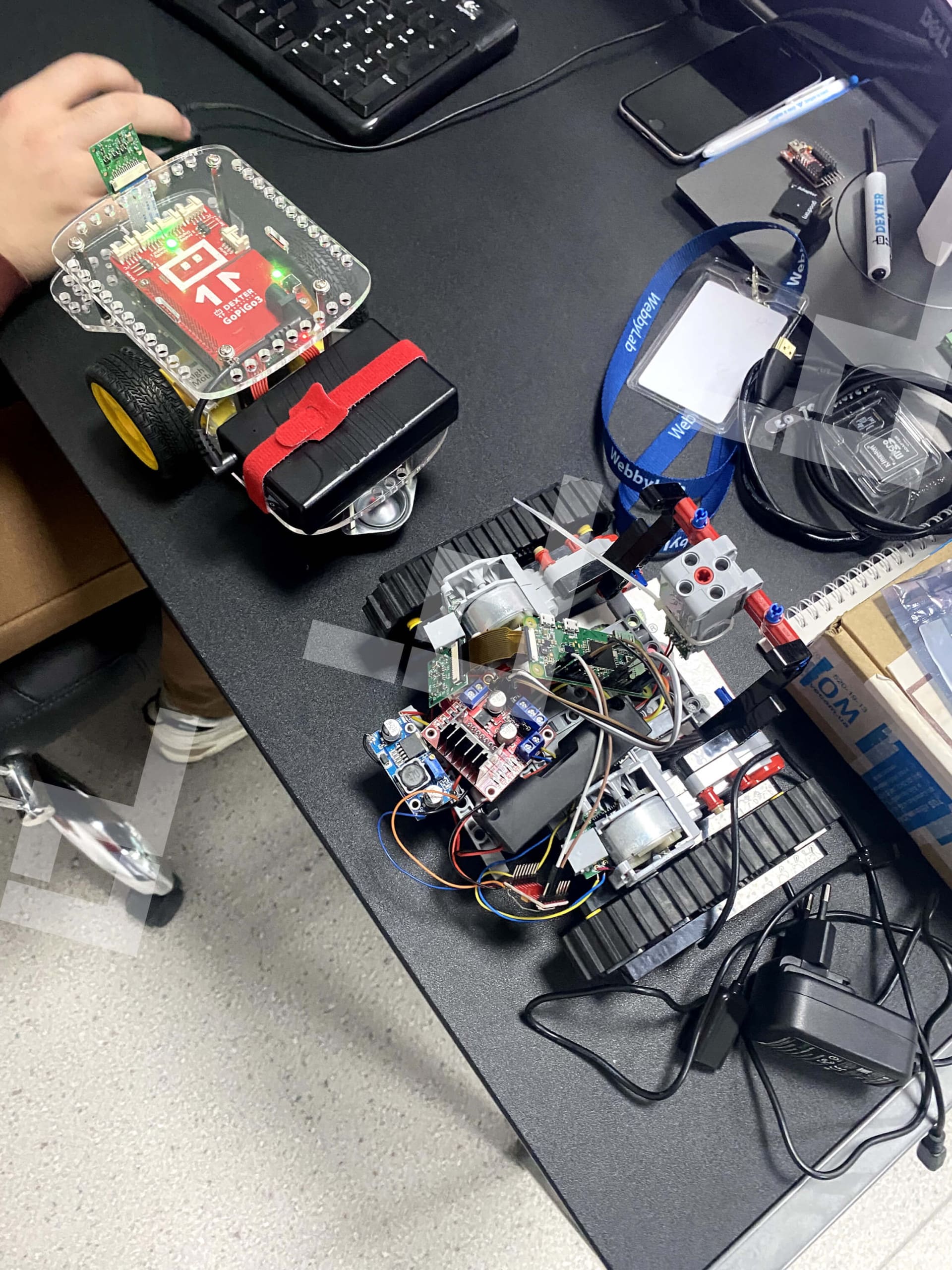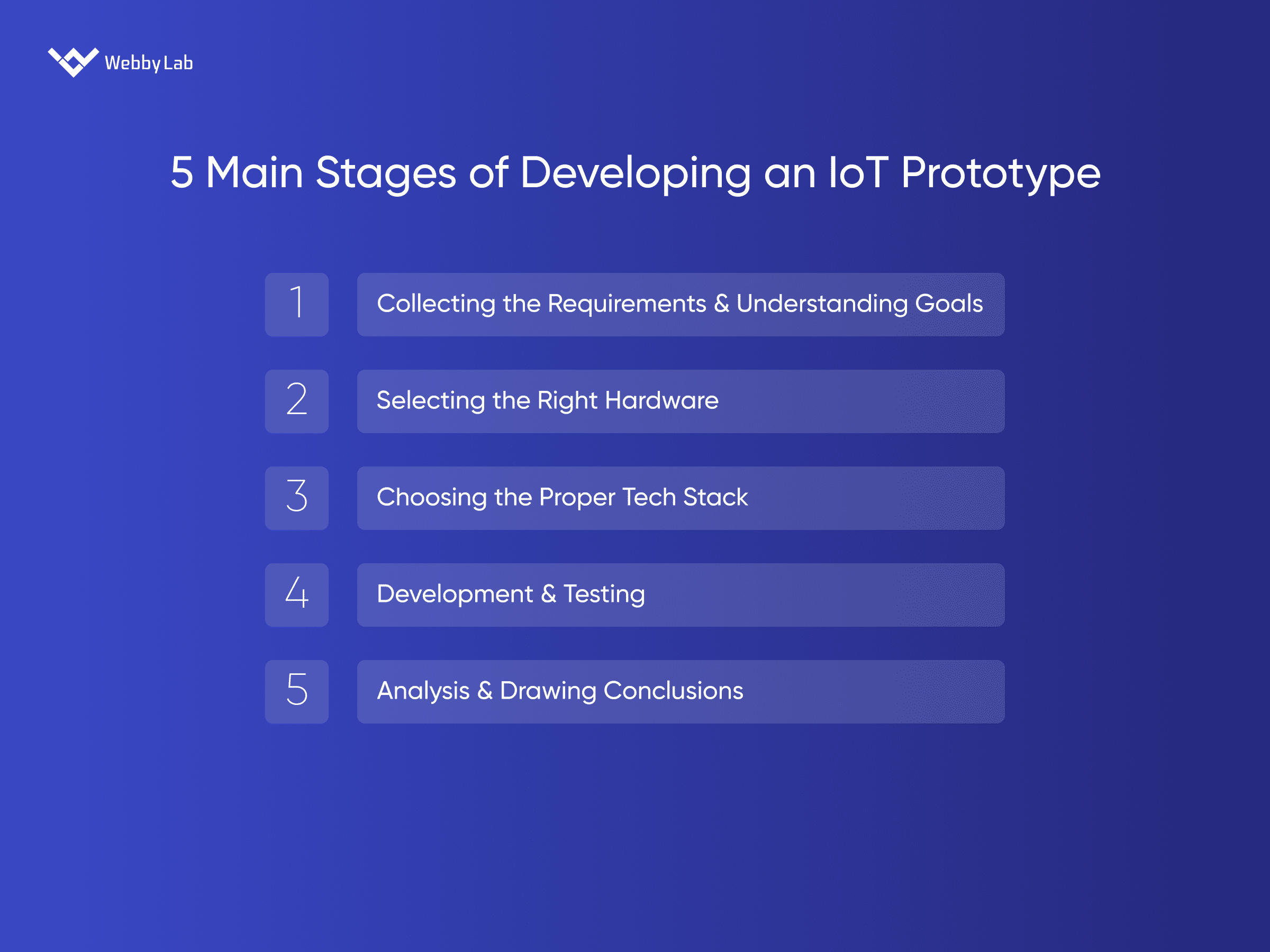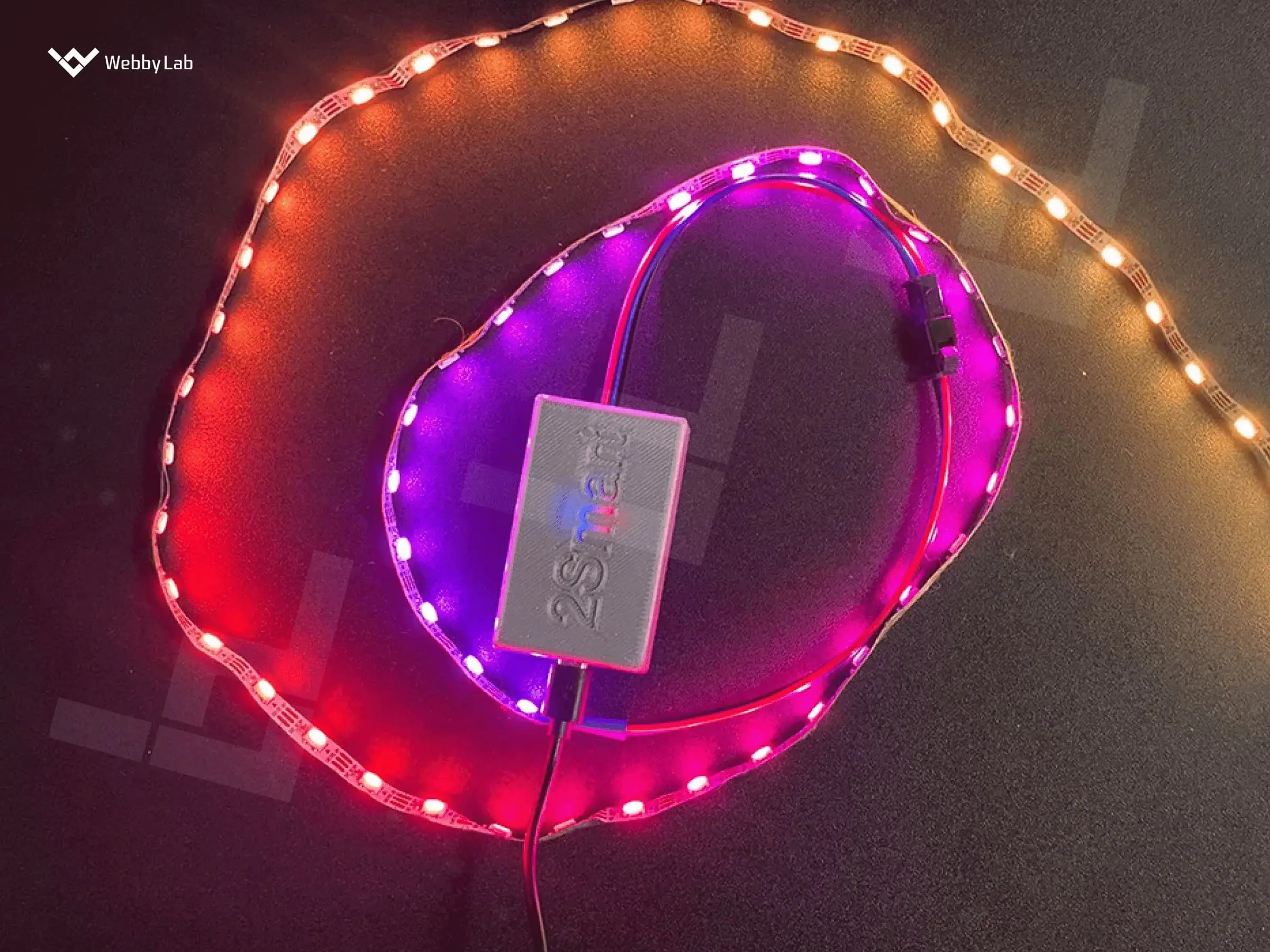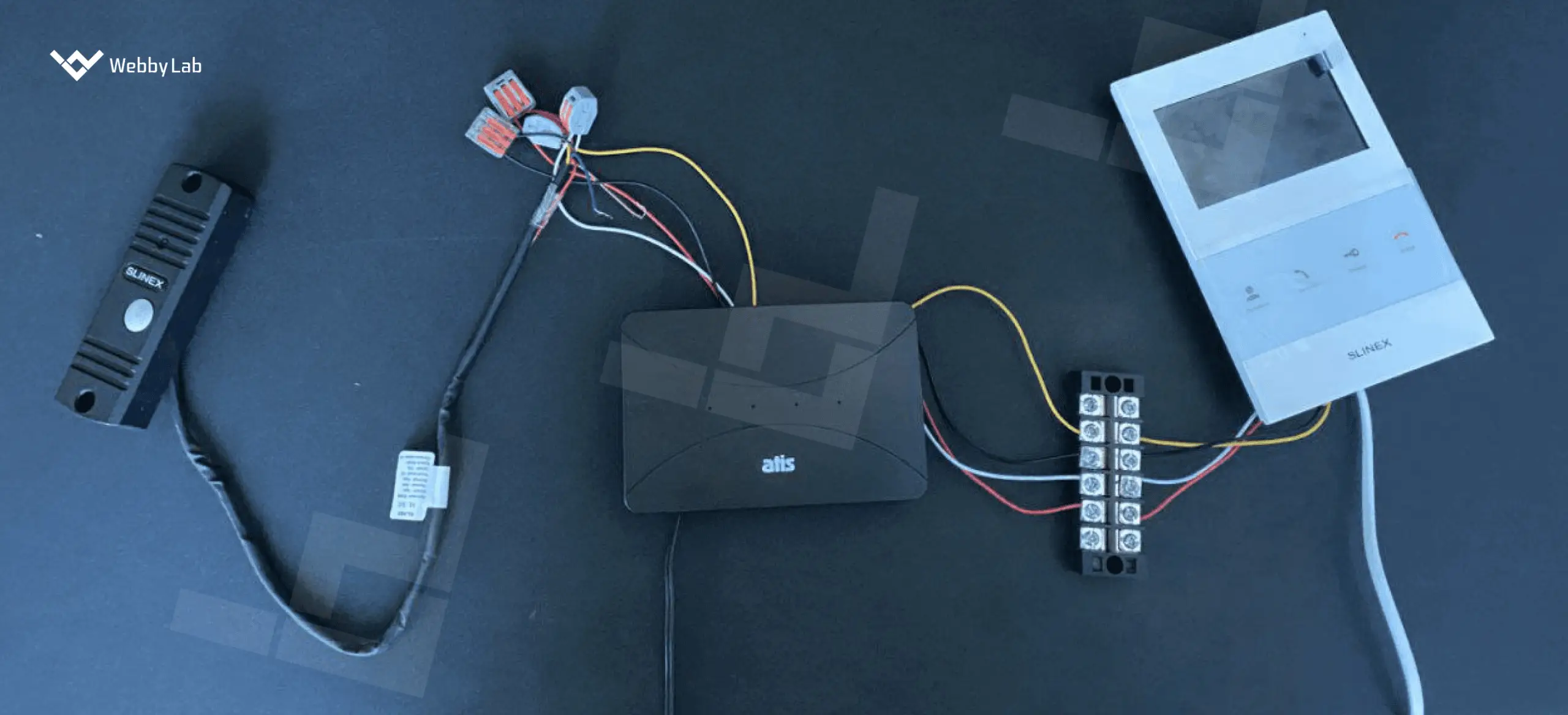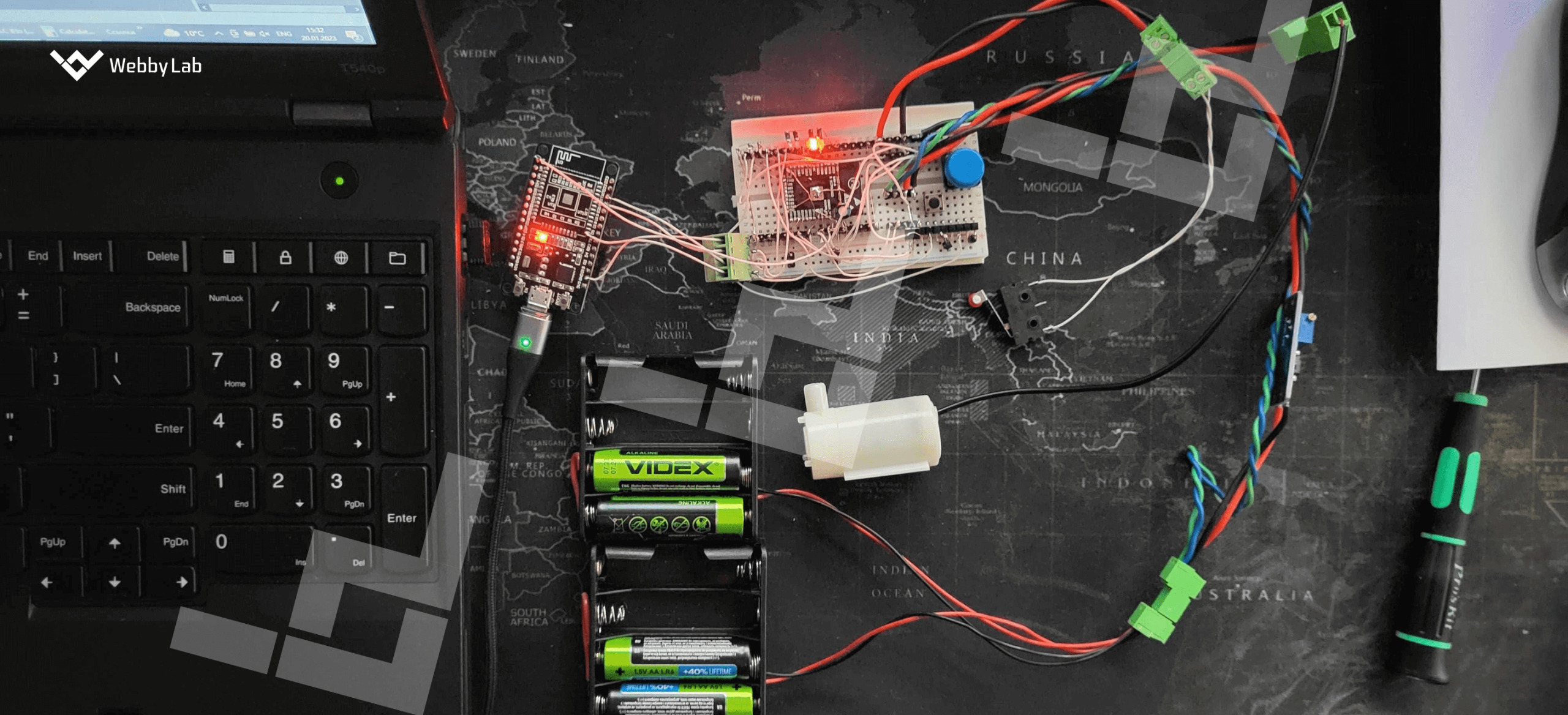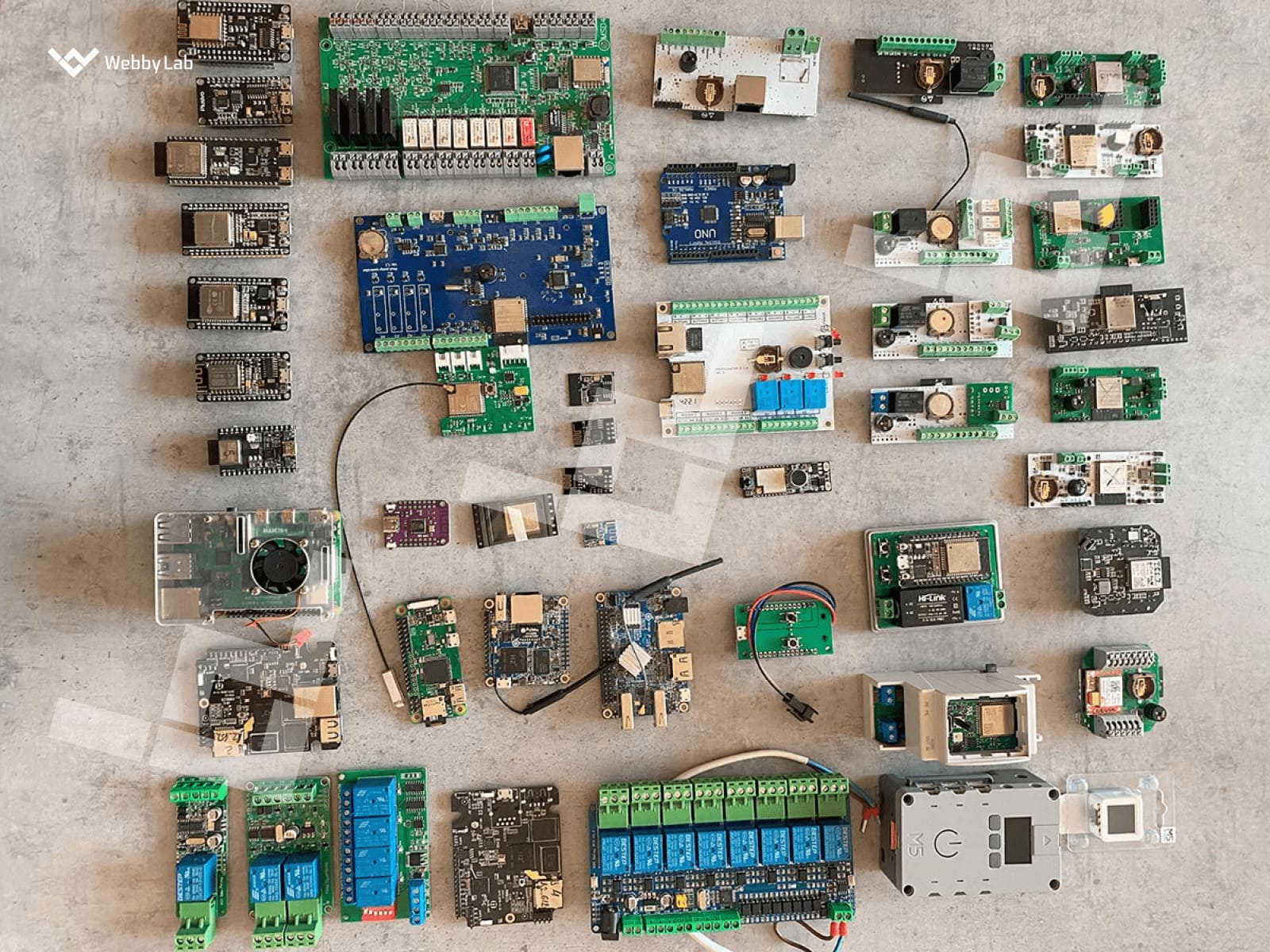Cost of IoT Prototype Implementation in 2026
Written by:

Kostiantyn Oliynyk
Head of IoT at Webbylab
With a robust academic background in Telecommunication Systems Engineering, I apply my knowledge to lead innovations in the IoT domain. Starting as the first team member in the newly formed IoT department at WebbyLab, I've spearheaded its growth, fostering the expansion into embedded and hardware development alongside our core software projects. My dedication lies in pushing the boundaries of IoT technology, fostering a culture of innovation and excellence that profoundly impacts our clients' operational success.
To build an IoT prototype, you’ll need 4-10 weeks on average.
However, the process may take longer depending on the project’s parameters: complexity, features and design specifics, number of developers, and their expertise.
Building IoT prototypes can give you a huge boost for the project’s successful deliverables, as it gives a better understanding of the hardware, software, and mobile application itself, providing early feedback from the end users and more data about the project itself. Apart from cost reduction and time optimization, this data helps to enhance multiple aspects of IoT product development, helping it to become more useful for users and profitable for business owners.
To be able to evaluate the results of the IoT prototyping process correctly, it’s essential to set up clear objectives and review how the created prototype delivers value to both customers and your business: increased efficiency, improved budget spending, enhanced user experience, and more. For this reason, WebbyLab recommends creating the KPIs for your IoT prototype, ensuring they’re addressing multiple aspects in terms of value, usability, security, etc.
In most cases, the IoT prototyping stages are similar, as they cover only the basic functions of your potential product. To successfully prototype an IoT device, the key steps cover considering the requirements, choosing the suitable hardware, selecting the right tech stack, and software development (alpha phase, beta phase, and pilot production of an IoT prototype).

